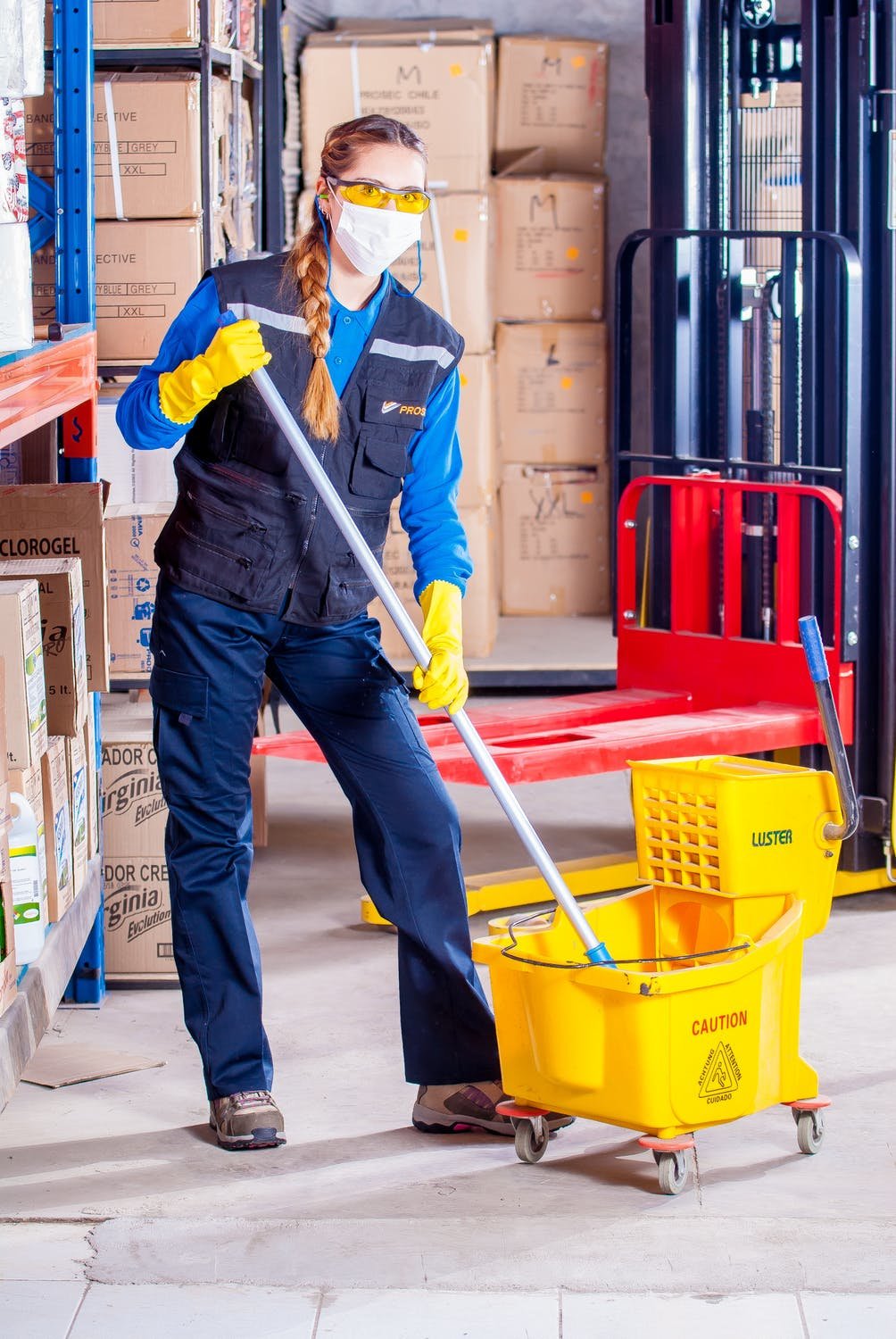COVID-19 updates and clarifications
Harris and Fort Bend counties have both extended their relevant mask orders for businesses to require all staff and visitors to their establishments wear face masks to help stop the spread of …
This item is available in full to subscribers.
Attention subscribers
To continue reading, you will need to either log in to your subscriber account, below, or purchase a new subscription.
Please log in to continue |
COVID-19 updates and clarifications
Harris and Fort Bend counties have both extended their relevant mask orders for businesses to require all staff and visitors to their establishments wear face masks to help stop the spread of theSARS-CoV-2 virus which causes COVID-19 , among other restrictions Tuesday afternoon. Fort Bend has extended its order through July 31, while Harris goes through Aug. 26. Tex. Gov. Greg Abbott has issued an order requiring masks as of July 2.
“We are all in this together and if we continue doing our part, we will succeed in beating the coronavirus without the governor of Texas forcing lockdowns or other extreme measures,” said Fort Bend County Judge KP George.
The order extensions come about a week after Governor Greg Abbott reversed course in opening the state back up due to rising cases statewide. As of June 30, the Texas Department of State Health Services reported 159,986 cases of COVID-19 in Texas since the pandemic began, with 72,744 remaining active. Harris County reported 31,422 cases total with 20,343 remaining active. Fort Bend County reported 3,782 total cases with 2,405 cases active. DSHS reports 152 cases in Waller County, but 92 had been categorized as recovered on June 29.
As of June 29, the Texas Medical Center had a maximum ICU surge capacity of 2,207 beds, if needed. Of the available beds, 460 had COVID-19 patients in them. CEOs of the hospitals that make up the TMC said they can adjust capacity to ensure patients are treated, but stressed that it remains vital the community work to slow the spread of COVID-19.
“The reality is we have to do a much better job of masking, hand hygiene and social distancing ourselves. The spread is increasing and it’s very concerning,” said Dr. Doug Lawson, CEO at St. Luke’s Health.
Local health authorities, hospital CEOs, and Infectious Disease Specialist Dr. Linda Yancey of Memorial Hermann Katy Hospital have stressed that, while the death rate is low, COVID-19 has other serious impacts the public should be aware of..
While Yancey said she is concerned about misinformation about COVID-19 as a disease, its treatment and its prevention that continues to permeate discussions about the virus.
More than just deadly
While the mortality rate for COVID-19 in Texas sits at around 1.5% and globally at about 4.9% of diagnosed cases according to DSHS and the World Health Organization respectively, Yancey said she is concerned about other long-term health effects in survivors.
“We don’t know what the long-term consequences are going to be, but we’ve certainly seen people who ultimately have relatively mild cases who have to be in the hospital for a few days are still on oxygen weeks later,” Yancey said.
While the Centers for Disease Control and Prevention report about 81% of COVID-19 patients recover without hospitalization, 19% of patients experience serious symptoms that require inpatient care.
Those who experience severe new coronavirus cases can experience permanent damage to the lungs, heart and kidneys according to Advent Health, a faith-based hospital group.
About 45% of hospitalized patients may experience neurological issues according to the American Neurological Association. These could include dizziness, headaches and strokes, among other health complications.
COVID-19 presents financial challenges as well. For a mild diagnosed case of COVID-19, prior to health insurance benefits, treatment has a median cost of $3,045 according to a study published by “Health Affairs,” a medical journal. A severe case requiring hospitalization has a median cost of $14,366. A year after recovery, follow up care may bring that total to nearly $19,000.
Remdesivir, one promising anti-COVID-19 drug, recently had its public price set at $520 per vial, with a five-day treatment of six vials totaling $3,120 before insurance, according to a press release from Gilead, the drug’s manufacturer.
“There aren’t very many viral diseases that we can treat well. Most of what we’re doing is just supporting the body while it recovers by itself,” Yancey said.
Treatment and recovery
Treatment and recovery take time, Yancey said. Treatments like remdesivir and convalescent plasma are promising but aren’t cures.
Convalescent plasma is an investigational treatment coordinated through the Mayo Clinic, Yancey said. It uses plasma from recovered patients to infuse antibodies into those still in treatment.
Yancey said hospitalized COVID-19 patients often need oxygen, but only a low percentage require intubation – an intrusive process which can damage the vocal chords and usually requires the patient be sedated.
Yancey said recovery time increases with challenges such as lung infections that can occur as the lungs are healing, and recovery is slow even without complications.
“We certainly have seen people who have had relatively mild cases who have to be in the hospital for a few days are still on oxygen weeks later,” Yancey said. “There are severe consequences even without mortality.”
Yancey said it is important for COVID-19 patients to take recovery time after being discharged. Following their physicians’ instructions and listening when their body tells them to rest are important, she said.
“Give yourself time to recuperate,” Yancey said. “Now is not the time to start marathon training. Rest. Eat. Make sure you’re eating right. A little activity every day.”
Fighting misinformation
Yancey said patients sometimes think they should get over COVID-19 quickly because the illness isn’t properly understood. She understands the public is frustrated with what seems like a changing story in the face of what is a relatively new virus, but she says there are consistencies the public should adhere to and rumors about SARS-CoV-2 that should be disregarded.
Yancey said hospitals have not been instructed by the CDC to report all deaths as new coronavirus-related, despite a widespread myth online.
“I heard that doctors are being paid thousands of dollars to label someone (as) a COVID death. I can report that I have not been paid a dime. … It’s completely untrue,” Yancey said.
Yancey also said that the test used to diagnose COVID-19 is specific to the SARS-CoV-2 virus rather than detecting all viruses in the coronavirus family.
Yancey said, in her medical opinion, all people two and older should wear a cloth face covering in public that they regularly wash. The point of the mask isn’t to stop an individual airborne COVID-19 virus, but to keep saliva and respiratory droplets from spreading when people speak, sneeze or cough, she said. Yancey emphasized that with her decades of experience she knew of no physical health condition which would prevent anyone from wearing a mask.
“The general public is being recommended to wear cloth face coverings,” Yancey said. “The general public does not need to be wearing N95 masks. Those are for health care personnel. They’re for specialized situations.”
Yancey added masks do not present a health risk of carbon dioxide (CO2) buildup or low oxygen in the body. If that were the case, she said, medical professionals who are currently wearing them for eight-hour or longer shifts would be facing serious health emergencies which simply aren’t happening.
Yancey said it was particularly important for those with breathing conditions such as asthma or COPD to wear cloth masks, or even N95 masks, to protect their more sensitive lungs.
“Anybody who has potential lung disease, especially asthma, needs to be laundering their mask in fragrance-free hypoallergenic detergent, because perfumes that smell great in most detergents (for a person with lung disease) could facilitate an asthma attack,” Yancey said.
Readers with anxiety-related issues are encouraged to speak with their mental health care provider regarding mask usage.
The CDC, World Health Organization and the Occupational Safety and Health Administration all suggest wearing cloth face coverings in public, though OSHA cites situations where different masks may need to be worn in the workplace.
“(Cloth masks) are worn in public over the nose and mouth to contain the wearer's potentially infectious respiratory droplets produced when an infected person coughs, sneezes, or talks and to limit the spread of SARS-CoV-2, the virus that causes Coronavirus Disease 2019 (COVID-19), to others,” OSHA’s website says.
While all public gatherings are a concern, Yancey said medical professionals are associating spikes in COVID-19 cases associated with the opening of restaurants and bars across the Katy area after state restrictions were eased.
Yancey also wanted to reassure the public that hospitals can serve non-COVID-19 patients. She said she had heard reports when the pandemic first began that patients weren’t going to the hospital when they needed to because they didn’t think there were available resources for them.
“Absolutely, if you’re having a hard time, please come to the hospital,” Yancey said.
Keywords
COVID-19, Dr. Linda Yancey, infectious disease, mortality rate, remdesivir, convalescent plasma, Mayo Clinic, SARS-CoV-2, coronavirus,










